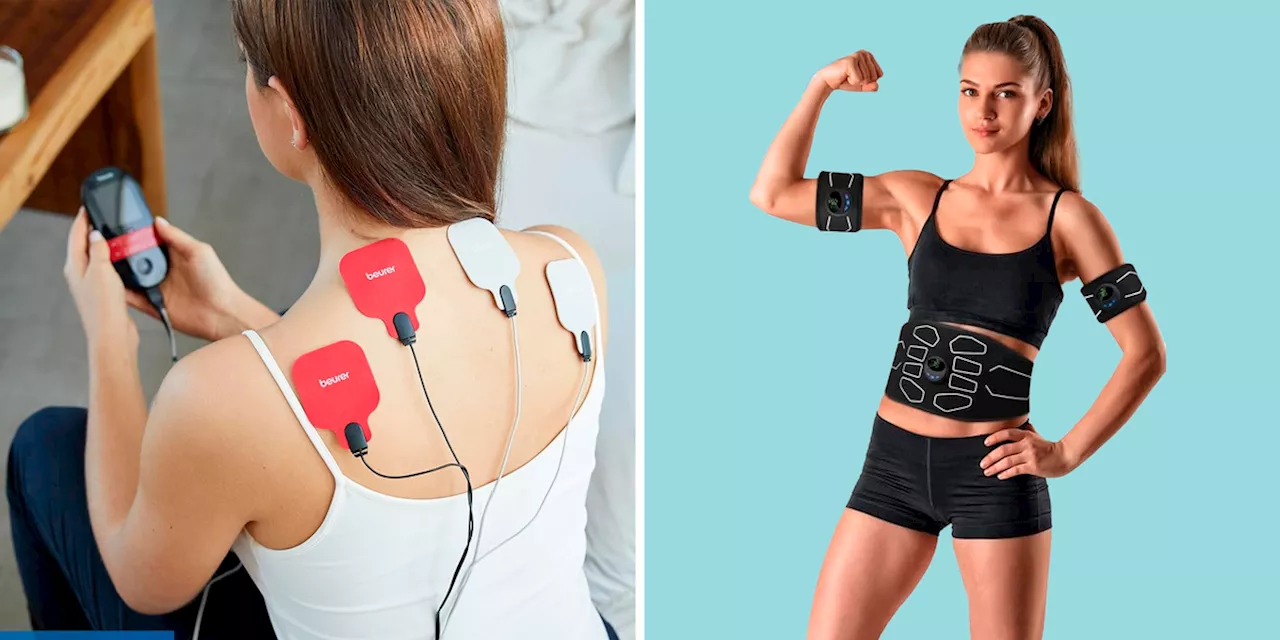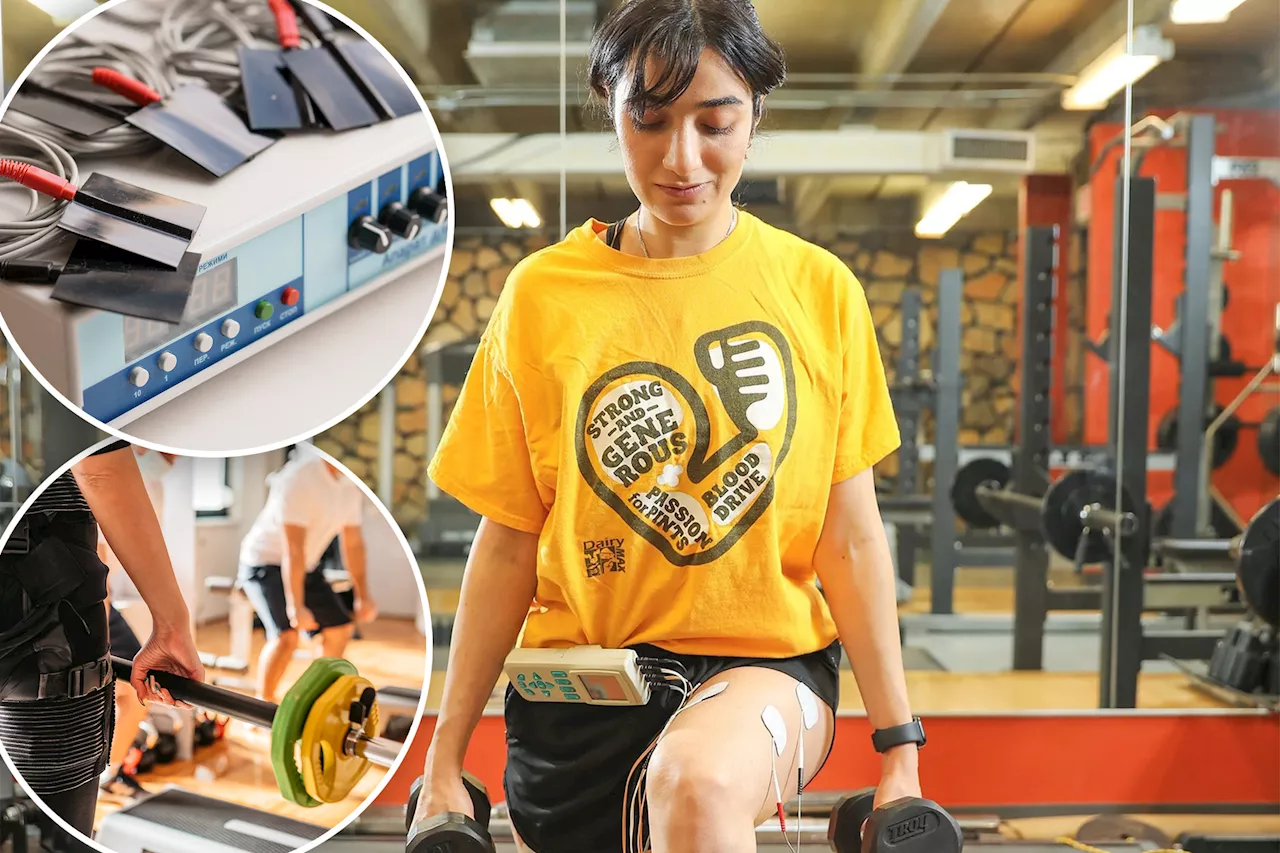This article explores the use of NMES (neuromuscular electrical stimulation) as a tool to enhance muscle growth and workout performance. It delves into the mechanism behind NMES, its potential benefits, and how it compares to traditional exercise methods.
Under normal conditions, the brain activates muscles by sending signals through the nervous system, explained Sudip Bajpeyi, a kinesiology professor at the University of Texas at El Paso. NMES mimics this process by delivering external electrical currents to the nerves, causing the muscles to contract, without input from the brain. Think of it as though your muscles are contracting involuntarily. \This device, which can be affixed to gym shorts, may raise some eyebrows in the weight room.
It’s a handheld unit holding wires attached to electrode pads that athletes place on the skin over the muscles they want to target. Users can adjust pulse frequency, intensity and stimulation duration. \The researchers compared the results of those who embraced NMES while exercising to those who did not, finding greater gains in strength and muscle mass with the gadgets. has found that NMES can activate a larger proportion of muscle fibers within a muscle group, potentially delaying muscle fatigue and enabling longer workouts. Exercise is medicine, but not everyone is able or willing to engage in traditional exercise, said Bajpeyi. NMES has great potential for improving metabolic health by building muscle mass, which can help the body process blood glucose more effectively.
NMES Electrical Stimulation Muscle Growth Workout Performance Exercise
United States Latest News, United States Headlines
Similar News:You can also read news stories similar to this one that we have collected from other news sources.
 Unlock Muscle Performance with Electrical StimulationDiscover how muscle stimulators can enhance your fitness journey by strengthening, toning, managing pain, and accelerating recovery. Explore the science behind this innovative technology and learn how it can benefit athletes, individuals recovering from surgery, and anyone seeking to optimize their muscle function.
Unlock Muscle Performance with Electrical StimulationDiscover how muscle stimulators can enhance your fitness journey by strengthening, toning, managing pain, and accelerating recovery. Explore the science behind this innovative technology and learn how it can benefit athletes, individuals recovering from surgery, and anyone seeking to optimize their muscle function.
Read more »
 Effect of somatosensory electrical stimulation on hand choiceHand choice, an unconscious decision, is influenced by target-related information, but if these are non-informative, the choice will be approximately 50-50. In this equilibrium situation, non-target information may also aid in decision-making, but no research has demonstrated this.
Effect of somatosensory electrical stimulation on hand choiceHand choice, an unconscious decision, is influenced by target-related information, but if these are non-informative, the choice will be approximately 50-50. In this equilibrium situation, non-target information may also aid in decision-making, but no research has demonstrated this.
Read more »
 Overcoming spasticity to help paraplegics walk againThanks to new high-frequency electrical stimulation that blocks spasticity, two paralyzed patients suffering from muscle stiffness after spinal cord injury benefit from rehabilitation protocols for walking again.
Overcoming spasticity to help paraplegics walk againThanks to new high-frequency electrical stimulation that blocks spasticity, two paralyzed patients suffering from muscle stiffness after spinal cord injury benefit from rehabilitation protocols for walking again.
Read more »
 Music Instructor Overcomes Essential Tremor with Deep Brain StimulationMatt O'Brien, a music instructor, struggled for years with essential tremor, a movement disorder that made playing his guitar nearly impossible. Deep brain stimulation surgery has given him remarkable control over his tremors, allowing him to pursue his passion again.
Music Instructor Overcomes Essential Tremor with Deep Brain StimulationMatt O'Brien, a music instructor, struggled for years with essential tremor, a movement disorder that made playing his guitar nearly impossible. Deep brain stimulation surgery has given him remarkable control over his tremors, allowing him to pursue his passion again.
Read more »
 Music Restored: Man's Tremors Controlled by Deep Brain StimulationMatt O'Brien, a music instructor, battled essential tremor for years, making even simple tasks difficult. Thanks to deep brain stimulation surgery, he's regained control of his movements and can now play his guitar again.
Music Restored: Man's Tremors Controlled by Deep Brain StimulationMatt O'Brien, a music instructor, battled essential tremor for years, making even simple tasks difficult. Thanks to deep brain stimulation surgery, he's regained control of his movements and can now play his guitar again.
Read more »
 Vagus Nerve Stimulation Shows Promise for Treating Severe DepressionA study suggests that stimulating the vagus nerve, which connects the brain to major organs, could be a viable treatment option for individuals with severe depression who haven't responded to traditional therapies. While initial results were mixed, the study showed potential in alleviating the mental paralysis often associated with major depression.
Vagus Nerve Stimulation Shows Promise for Treating Severe DepressionA study suggests that stimulating the vagus nerve, which connects the brain to major organs, could be a viable treatment option for individuals with severe depression who haven't responded to traditional therapies. While initial results were mixed, the study showed potential in alleviating the mental paralysis often associated with major depression.
Read more »
